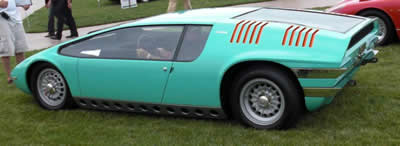

Isetta
Iso created this unique car design in the early 1950s, an obvious extension of their motorcycle business. Starting in 1954, the Isetta design was licensed to automobile manufacturers around the world: France (by VELAM), Spain, Great Britain and Brazil (by Romi). The most successful, however, was the BMW Isetta. The Isetta was a financial success for BMW and the royalties paid to Iso allowed Renzo Rivolta to move on to developing GT cars and the income from the Isetta was important for BMW as well.
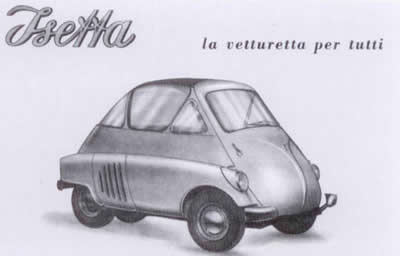
Iso Rivolta GT
In 1962 Iso Rivolta made their first Grand Touring (GT) car – and what a car it was, and still is – the Iso Rivolta GT. With chassis design by Giotto Bizzarrini and styling by Giorgetto Giugiaro of Bertone, Iso made a comfortable four seater that handled like a sports car. It is powered by a Chevrolet Corvette 327 cid engine and has disc brakes on all four wheels with the rear being in-board, like a race car.
The motoring press loved this car and what’s not to love? Italian styling and American power – a great combination. There were 799 Iso Rivolta GTs produced between 1963 and 1970.
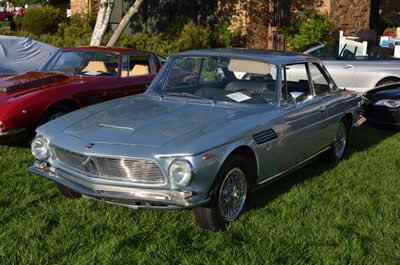
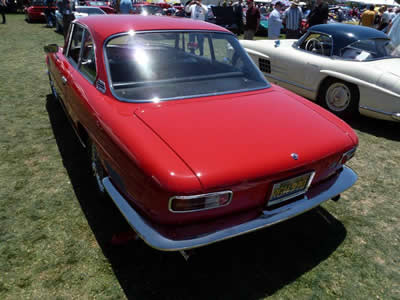
Iso Grifo
The Iso Grifo A3/L was based on a shortened Iso Rivolta GT chassis and was introduced at the 1963 show in Turin. The “L” stands for lusso, or luxury. The Grifo is a beautiful, timeless handmade design that still looks fresh and modern today, styled by Giorgetto Giugiaro of Bertone. The motoring press loved the Grifo as well. The Grifo was the fastest production car one could buy in 1966. This version used the same 327 cid Corvette engine as the Rivolta GT.
In 1968 Piero Rivolta decided to produce a more powerful Iso Grifo and installed a Corvette 427 cid (7 liter) engine into a Grifo. The engine did not fit in a compartment intended for the 327 cid, so Iso designed a different type of hood scoop to accommodate the larger engine. It is probably the most unusual engine hood scoop ever made and people either love it or hate it. And even if they hate it, they remember it. I love it.
The Iso Grifo series two, introduced in 1970, was basically the same car as the series one Grifo with the headlights partially covered.
In 1972 Iso started using the Ford 351 cid Cleveland engine and these Grifo IR8 models can be recognized by a taller hood scoop.
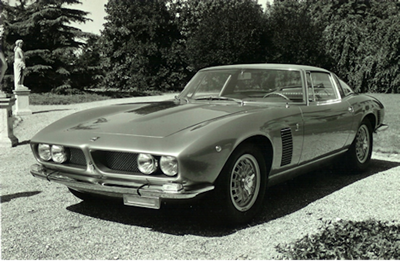
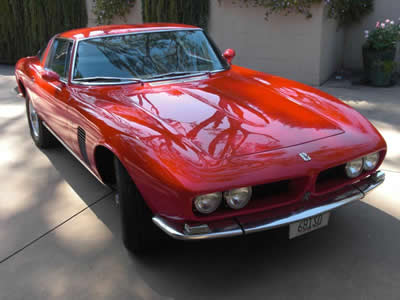
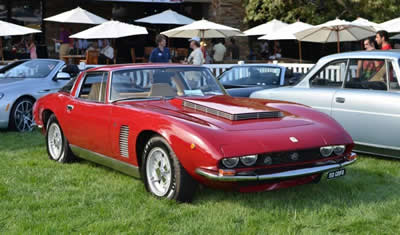
Iso Grifo A3/C
The competition version of the Grifo was named Iso Grifo A3/C (C for Corsa). This was a different body design than the A3/L and Giorgetto Giugiaro, of Bertone, was again responsible for the styling. It had a lightweight riveted aluminum body and everything about this car was designed to win the 24 Hours of Le Mans.
It was low to the ground, lightweight, used under the car aerodynamics and the engine was pushed far back in the chassis so that it is a front-mid-engine placement. The engine is placed so far back that the distributor is under the dashboard and a panel on the dashboard is removed to access the distributor.
The result is almost a 50/50 weight distribution front to back. The doorsills are also gas tanks for improved weight distribution. The Iso Grifo A3/C has a top speed of 170 MPH.
The Iso Grifo A3/C became the Bizzarrini GT 5300 when Giotto Bizzarrini split with Renzo Rivolta.
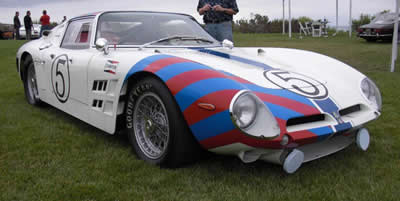
Iso Fidia
The Fidia was initially called the Iso Rivolta S4 when introduced in 1967. “The World’s Four Fastest Seats” was the Iso marketing slogan.
John Lennon liked the Fidia very much and he bought the second Fidia made, and the first with right hand drive. It is believed that Apple Corp (the Beatles record company) also owned two Fidias.
The Fidia body style is by Giorgetto Giugiaro when he was with Ghia. The engine is the same Corvette 327 cid V8 used on other Iso cars.

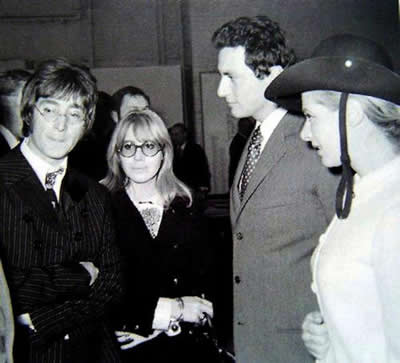
Iso Lele
The Lele is a 2+2 configuration that filled the gap between the two seater Grifo and the four door Fidia. The Lele also used the Corvette 327 cid V8 with either a manual or automatic transmission. Marcello Gandini of Bertone styled the Lele. The car is named after Lele Rivolta, wife of Piero Rivolta.
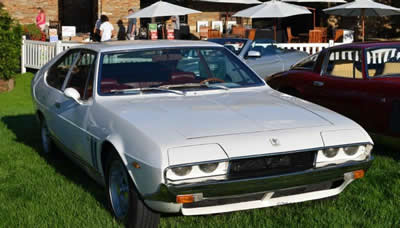
Bizzarrini S.p.A. was an automotive manufacturer in the 1960s, founded by former Alfa Romeo, Ferrari and Iso engineer, Giotto Bizzarrini. The company produced a small number of high-performance GT sports cars and racing cars before going out of business in 1969. The company was originally named Prototipi Bizzarrini s.r.l. The name was changed to Bizzarrini S.p.A. in 1966.
Bizzarrini graduated, with an engineering degree, from the University of Pisa in 1953 and joined Alfa Romeo in 1954 and then he joined Ferrari in 1957. He worked at Ferrari as a developer, designer, test driver, and chief engineer for five years. His work there included the Ferrari 250 TR, the Ferrari 250 GT SWB (Short Wheelbase Berlinetta), and the famous 1962 Ferrari 250 GTO.
Bizzarrini was fired by Enzo Ferrari, along with several others, during the infamous “palace revolt” of 1961. He briefly became part of Automobili Turismo e Sport (ATS), a company started by the ex-Ferrari engineers.
Bizzarrini’s engineering company, Societa Autostar, was hired to design a V-12 engine for a new GT car to be built by Ferruccio Lamborghini. This engine was used for the Lamborghini GT350, Lamborghini’s first car, and many other models of Lamborghini cars, including the great Miura.
Bizzarrini GT 5300
Beginning in 1964, Bizzarrini worked for Renzo Rivolta at his company, Iso Rivolta, and there he was instrumental in developing three Iso models: the Iso Rivolta GT, Iso Grifo both A3/L and A3/C versions. The A3/C would later become the Bizzarrini GT 5300.
Bizzarrini split with Rivolta in 1964 and founded his own company that produced approximately 140 cars through 1969 at its Livorno, Italy, factory. In 1966, Bizzarrini S.p.A. released a beautiful street legal Grifo A3/C badged as the Bizzarrini GT 5300 Strada (or Bizzarrini GT America, depending on the market).
A race version of the Bizzarrini GT 5300 won its class at the 24 Hours of Le Mans in 1965 and finished ninth overall.
Most of the GT 5300 Stradas had aluminum bodies and most of the GT Americas had fiberglass bodies. The mechanicals were basically unchanged from the A3/C except that a single Holley carburetor was available as an option in place of the four Weber carburetors that were standard on the A3/C.
There were a total of approximately 115 made combining the A3/C and GT 5300 versions. These are very rare and desirable collector cars today. No one knows how many GT 5300s are still in existence because the Bizzarrini factory records have not survived.
Three GT 5300s were built as beautiful Style Italia designed Spyders (with a targa-like top), all of which survive today.

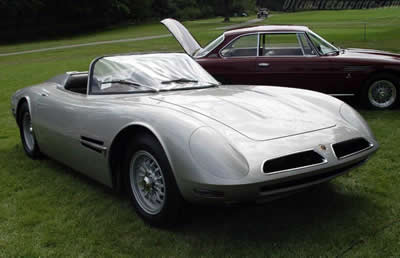
Bizzarrini 1900 GT Europa
Bizzarrini also created a scaled-down, low-cost alternative to the GT 5300 designed for GM-Opel based on the Opel 1900 platform. Bizzarrini produced this fiberglass-bodied car as the Bizzarrini GT 1900 Europa. The engine is an inline four-cylinder 1.9-liter Opel with a power output of 110hp and a claimed top speed of 128 MPH.
Unfortunately, there were approximately only 17 examples of the Europa made between 1966 and 1969.
Road & Track wrote in April 1971, “The Bizzarrini GT 1900 Europa is the kind of Opel GT that GM should have built in the first place.” By the time this article was published, the Europa was out of production.
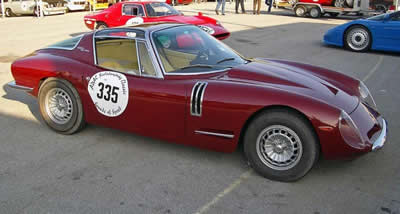
Bizzarrini P538
The American racing driver Mike Gammino asked Giotto Bizzarrini to make a car for him to race in the North American Can-Am series. This request resulted in the Bizzarrini P538, which is a mid-engine race car without a top. Originally, two were made with Lamborghini V-12 engines and two were made with Corvette 327-cu.in. (5.3-liter) V-8s.
The body is fiberglass over a tubular steel chassis. This is a stunning car in person; however, it did not have a successful race career. It was originally introduced in 1965; there have been several continuation cars made since the original four.
The P538, known as the “Duca d’Aosta,” was made for Amedeo Duca d’Aosta, a member of European royalty. It is the only P538 that was legal to drive on the street and that has a proper hardtop.
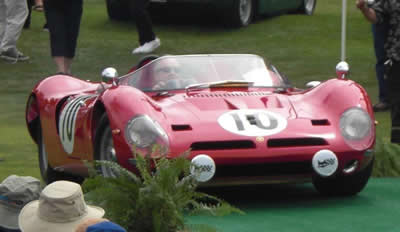
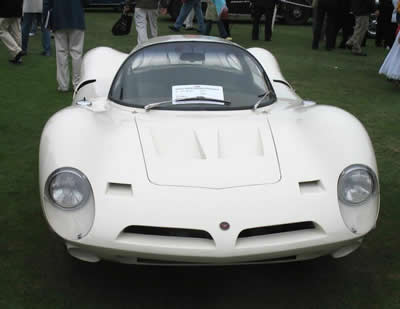
Bizzarrini Manta
The Bizzarrini Manta is a one-off design exercise by the famous Giorgetto Giugiaro. It was the very first design for his new company Italdesign Giugiaro.
The Manta was made in 1968 and uses a unique center driver seating position with a passenger on each side of the driver, an arrangement that was used by the McLaren F1 more than 20 years later. It is a mid-engine configuration and has a very low roofline.
This beautiful car has been restored to its original condition and has a Corvette 327-cu.in. engine. Over its lifetime, it has been painted silver, red and green, and it is now back to its original color of “blue green aqua,” a turquoise color.
This car has won many awards and was shown at the Concorso d’Eleganza Villa d’Este in 2008.
Bizzarrini S.p.A went out of business in 1969.
*Excerpted from European Style with American Muscle by Mike Gulett - © Michael Gulett 2011
